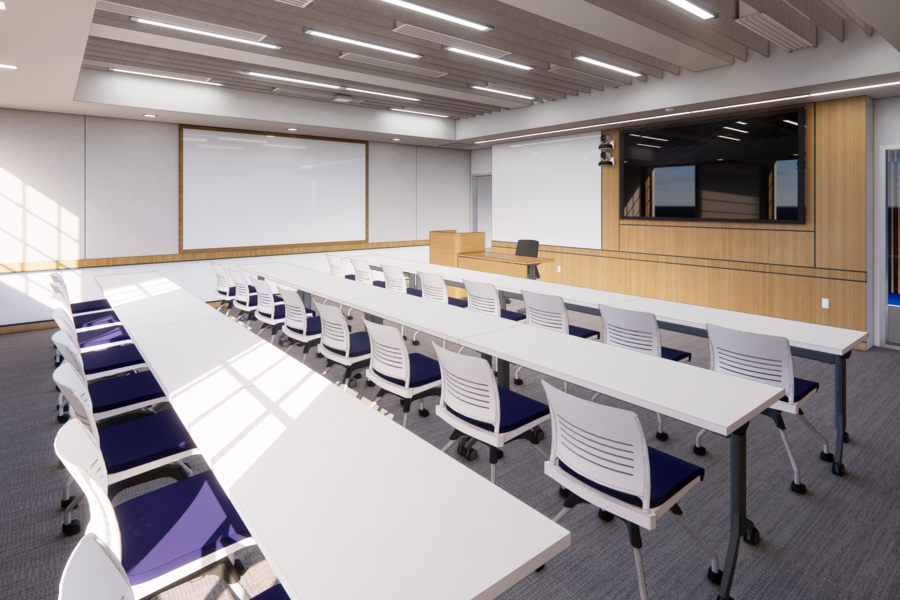Johns Hopkins University is seeking community input on its draft Learning Environment Guidelines, which outline a consistent approach to the design, renovation, and construction of classrooms and academic spaces on the Homewood campus. Developed over six months with input from a diverse group of stakeholders, the guidelines will be implemented as Homewood's learning environments evolve to better support modern teaching practices and the university's Ten for One strategic vision.
JHU faculty, students, and staff are invited to review the draft and submit their comments through April 25.
"The guidelines are not meant to be prescriptive or a comprehensive guide," says Executive Vice Provost Stephen Gange, who also serves on the guidelines' steering group. "Rather, they establish a base level of capability and performance expectations to ensure consistency. By focusing on active and collaborative learning, fostering faculty-student interaction, and providing sustainable and inclusive environments, the guidelines aim to enhance both faculty and student learning experiences."
The guidelines' guiding principles are to:
Encourage active and collaborative learning through design that inspires students to engage with their peers and the content.
Promote student and faculty interaction through design that facilitates exchange and provides instructors with the flexibility to choose their preferred teaching methods.
Create enriching educational experiences through design that promotes continuous learning both inside and outside the classroom and infrastructure that supports various modes of communication.
Provide supportive environments with spaces that support universal design for learning principles and foster an equitable and sustainable learning environment.
While these guidelines will only be implemented on Homewood campus, other Johns Hopkins campuses can use them as inspiration for their own renovations and construction.
The Learning Environment Guidelines were developed after six months of workshops and meetings with various campus groups and stakeholders. The steering group also considered a wide array of reports and references, including the university's 2023 Classroom Survey and 2021 Instructional Space Analysis.
Lee Coyle, senior director of planning and architecture for Johns Hopkins Facilities & Real Estate (JHFRE), encourages all university affiliates to participate in the guidelines' open comment period.
"Input from students, faculty, and the Registrar's office on how best to optimize the available space is essential to provide design solutions that truly enhance the learning experience," he says. "JHFRE values the opportunity to collaborate with everyone in the JHU community because the result is always better."
Posted in University News








